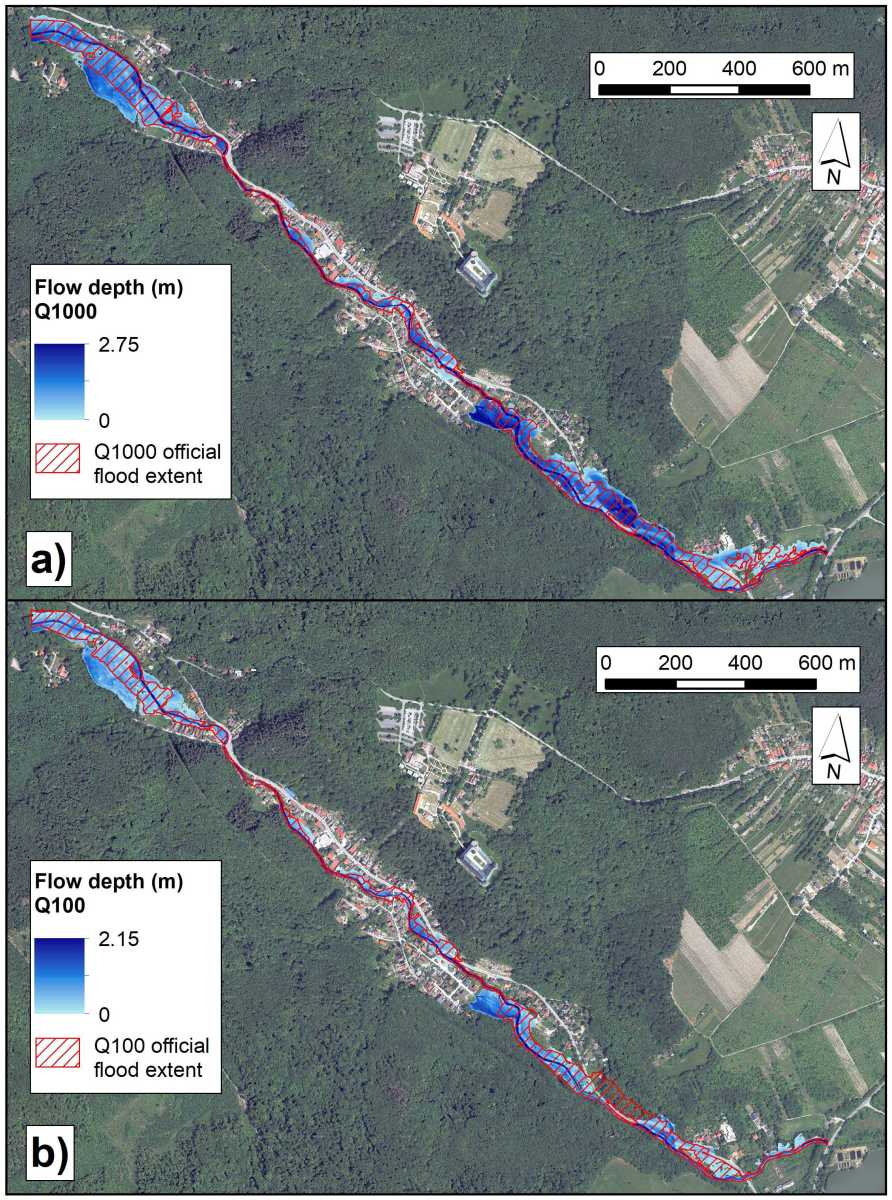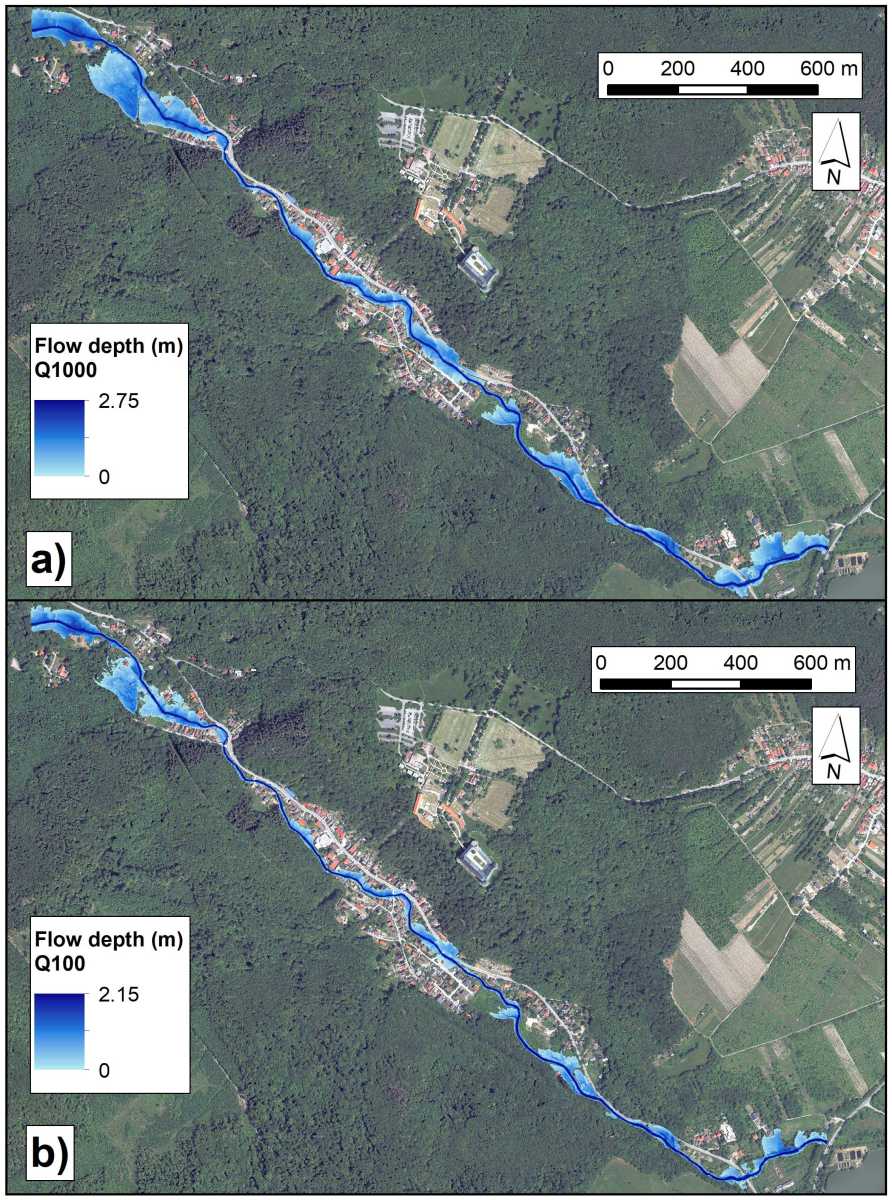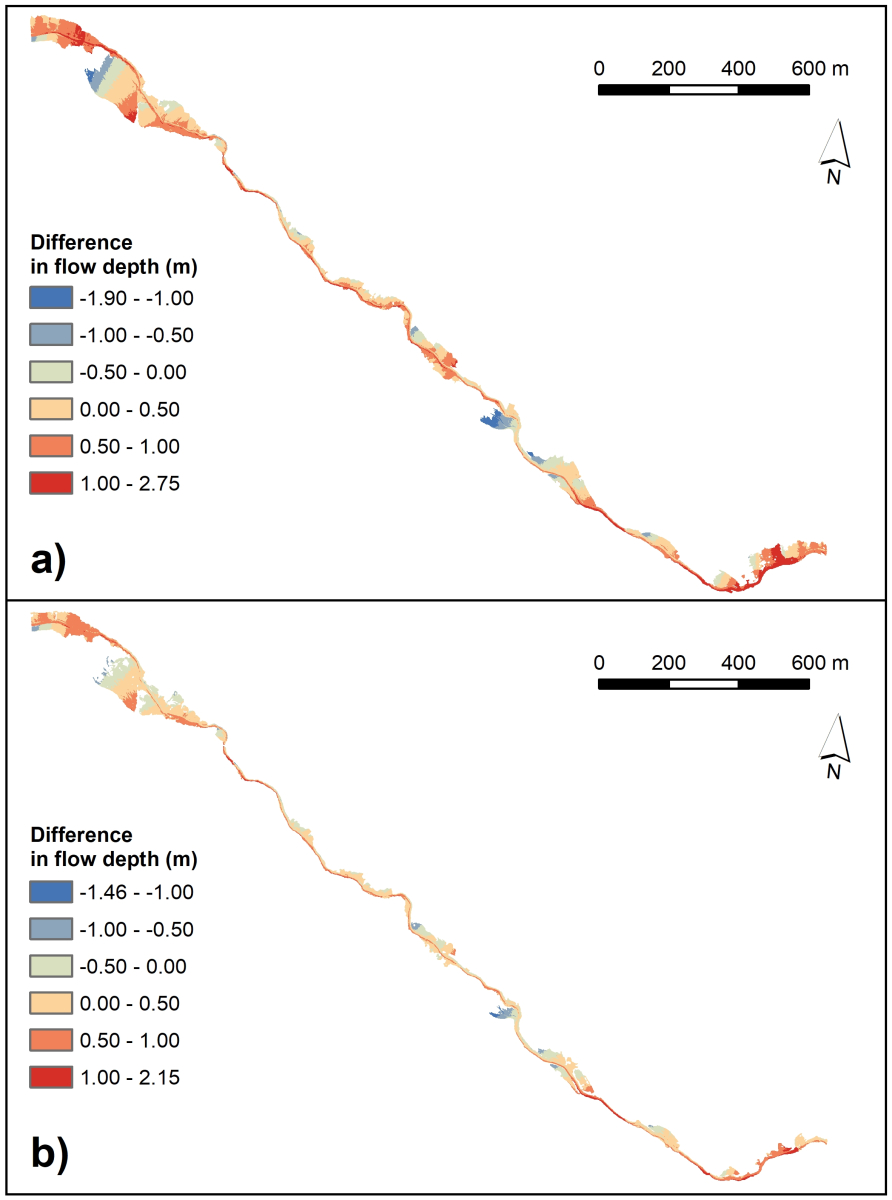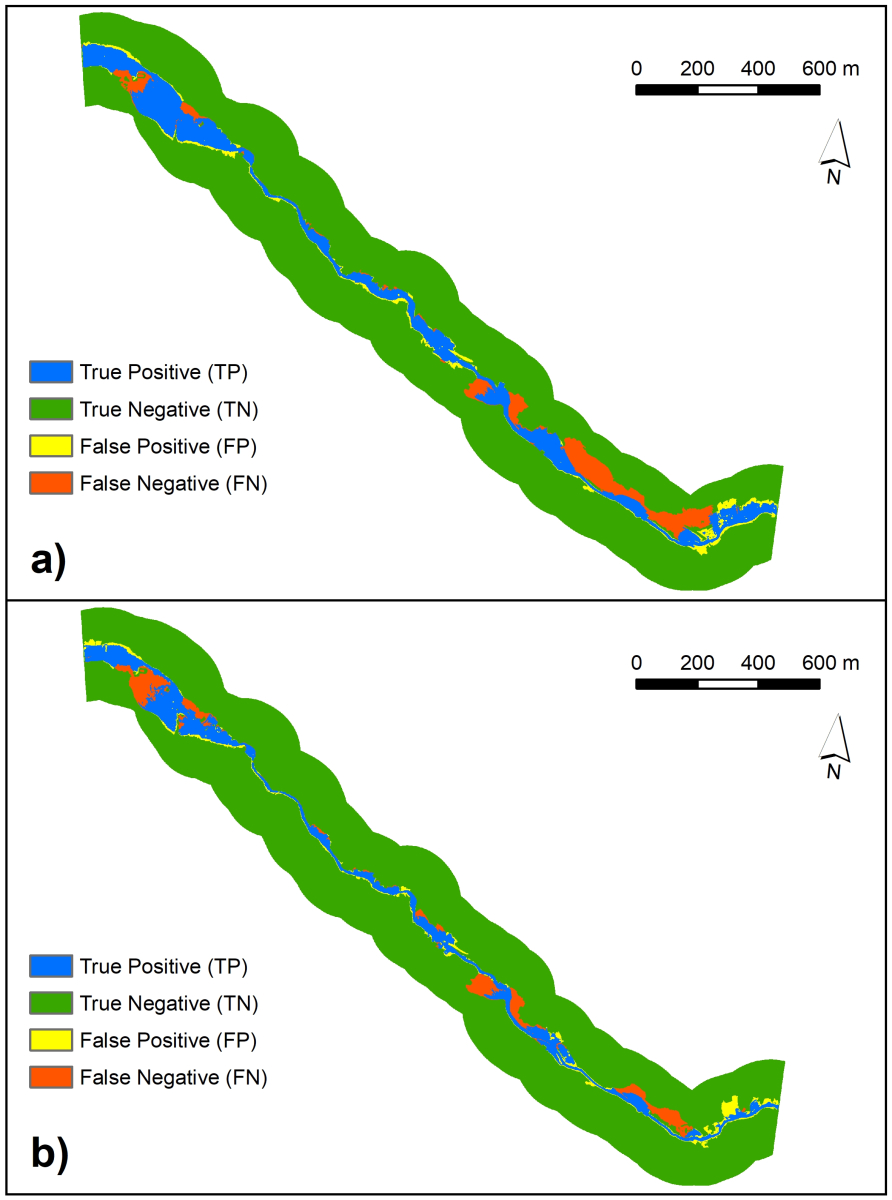Our colleagues, Matej Vojtek and Soheyl Moradi, in collaboration with other researchers, have published a research article comparing two approaches for mapping fluvial flood extent and flow depth.
In the article, the authors focused on comparing the hydraulic approach, performed using the 1D MIKE+ model, and the GIS-based approach, which was carried out using the Height Above the Nearest Drainage (HAND) model. The research question addressed was whether the HAND model is suitable for flood inundation modelling and comparable to 1D hydraulic modelling in the studied area represented by a 3.1 km section of the Gidra River. To determine the peak discharges with 100- and 1000-year return periods, the rainfall-runoff procedure was employed using the STORAGE and COSMO4SUB models. Accuracy of HAND models, with respect to the 1D hydraulic MIKE+ models, was assessed with the use of six metrics: Critical Success Index, F1-score, Bias, Precision, Recall, and Overall Accuracy. Based on the results, the HAND model moderately underestimated the hydraulically modelled flood extents in both flood scenarios, with Bias values of 0.84 (Q1000) and 0.87 (Q100). We concluded that the HAND-based modelled flood extents for the studied Gidra River section had an acceptable accuracy in both flood scenarios and in comparison to the 1D hydraulic models. The use of the HAND model is advantageous mainly for operational or preliminary fluvial flood hazard mapping due to its lower demands for data and model creation compared to hydraulic models.
The study also involved the Department of Geography, Geoinformatics, and Regional Development at Constantine the Philosopher University in Nitra and the Department of Agriculture and Forest Sciences (DAFNE) at Tuscia University in Viterbo, Italy.
The article Comparative analysis of hydraulic and GIS-based Height Above the Nearest Drainage model for fluvial flood hazard mapping: a case of the Gidra River, Slovakia is available on the website of the journal Stochastic Environmental Research and Risk Assessment (IF 2024: 3.6)
The article is a part of the research carried out in the project:
- NextGenerationEU through the Recovery and Resilience Plan for Slovakia under the project No. 09I03-03-V03-00085.
Text: Matej Vojtek










